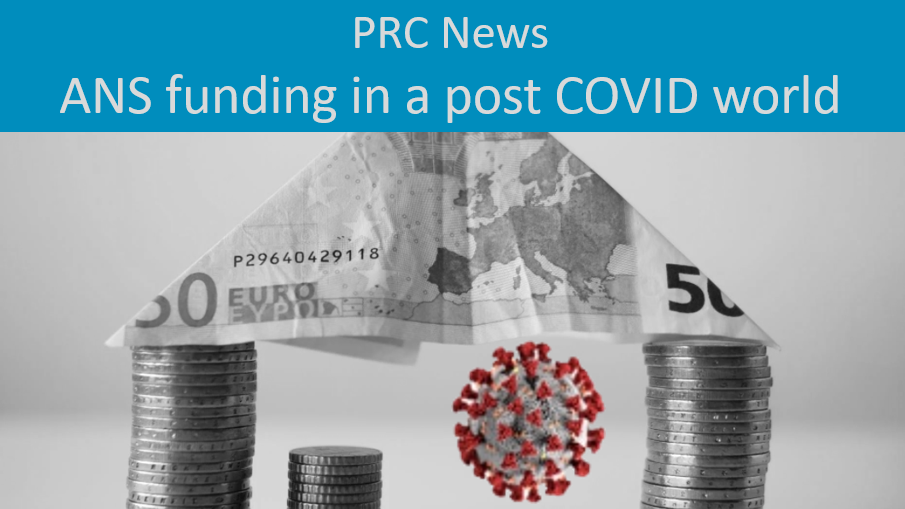PRC News - ANS funding in a post COVID-19 world
The outbreak of COVID-19 pandemic in 2020 continues to have a devastating financial impact in Q1 of 2021 on all key actors of the European aviation, in particular on airports, airlines and air navigation service providers.
For airports, the ACI estimated on 8 December 20201 that European airports will have -1.7 billion passengers less in 2020, resulting in a loss of -$40.8 Billion in revenues (€33.6 Billion) in 2020 compared to the projected baseline (pre-COVID-19).
The pandemic had also a devastating effect on airlines, which experienced a significant reduction in demand (a loss of 6.1 million flights in 2020, i.e. -55% of 2019 levels). On 24 November 20202, IATA estimated a loss of -$26.9 Billion for Airlines in Europe. The situation in 2021 is still very critical as airlines will have to face additional revenue losses due to new (stricter) travel restrictions imposed by States on non-essential travels following the latest waves of COVID-19.
The net amount billed for en-route charges in 2020 was €3.2 Billion instead of €7.9 Billion in 2019, a decrease of -59%. While the actual ANS cost figures for 2020 are not yet fully available, it is already possible to estimate the impact of this crisis on the anticipated en-route revenues in 2020. Current estimates show that the shortfall or “loss” in en-route revenues amounts to €4.8 Billion at system level.
The paragraphs below provide estimates for the proportion of this loss that could be attributed to ANSPs and airspace users in future years depending on the charging scheme under which they operate (full-cost recovery or SES regulations). It should be noted that the estimated losses that are presented below for SES ANSPs were calculated using the traffic risk sharing arrangements defined in the Performance and Charging Scheme Regulation (EU) No 2019/317. These figures are therefore subject to change following the application of the exceptional RP3 measures proposed by the European Commission and the adoption of RP3 performance plans.
Depending on their regulatory regime, ANSPs operating under full cost recovery will recover all the losses incurred in 2020 from airspace users (i.e. €0.4 Billion), while ANSPs operating under the performance and charging scheme of the Single European Sky (determined costs regime) will have to bear €0.3 Billion, the remaining €4.1 Billion being recovered from airspace users after the adoption of their performance plans (i.e. not before 2023) and spread over 5 to 7 years (i.e. until 2027 or 2029).
Overall, the substantial traffic decrease resulting from the COVID-19 pandemic has resulted in a +47% increase of en-route unit rates in 2021 for States operating under the full cost recovery regime. On the other hand, for States subject to the SES regulations, 2021 unit rates are based on planned traffic and costs assumptions developed in November 2019 and remained in the same order of magnitude as in 2020.
In 2021, States will have to face additional losses which will add to those borne in 2020. For States bound by the SES regulations, the magnitude of this loss will depend on the outcome of the current RP3 target-setting process and on the development of traffic during the year. Overall, considering the SES States’ current assumptions for 2020 and 2021 as well as the most recent traffic forecast (Scenario 2 of the STATFOR’s traffic forecast dated 4 November 2020), some €7.6 Billion would need to be charged to airspace users through adjustments to the unit rates, starting from 2023 and spread over 5 to 7 years (i.e. between €1.5 Billion and €1.1 Billion to be recovered per year on top of normal annual costs)3.
This will result in a significant increase of en-route unit rates in 2022 as well as in future years when these adjustments will be applicable, thereby imposing an additional burden on airspace users.
When also adding-in the loss in terms of terminal ANS revenues (which represent, on average, 20% of the en-route + terminal chargeable cost-bases), the effect of the COVID-19 pandemic on the financial situation of ANSPs and airlines will be even greater.
The majority of European ANSPs have already begun to implement various measures to mitigate the impact of this crisis and the associated potential cash shortage. These measures include the implementation of cost-containment initiatives, availing of loans to alleviate liquidity risk as well as, in some cases, receiving financial support from their States. Further information on these measures will be provided in Chapter 5 of this year’s Performance Review Report (PRR) 2020 and in the ACE 2019 benchmarking report - to be published in spring 2021.
Given the magnitude of the shortfall in ANS revenues, however, these measures will not be sufficient to cover for the shortfall in the current financing of air navigation services.
The PRC considers that the current ANS charging schemes (whether it be it “full cost recovery” or “determined costs”) will become unsustainable in the next few years. The PRC therefore recommends that States consider assessing options with the view to revising the current charging scheme, (for instance by restructuring debts or by having a mix of financing between State budget and air navigation charges). The PRC would be ready to provide technical feedback on this.
https://aci.aero/wp-content/uploads/2020/12/Advisory_Bulletin_The_impact_of_COVID_19_on_the_airport_business.pdf↩︎
It should be noted that the figures reported for SES States in this paragraph exclude data relating to the United Kingdom.↩︎
